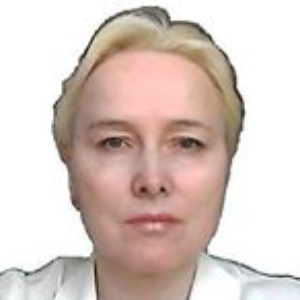Title : Deep sleep simulation
Abstract:
Observed at the beginning of sleep, deep sleep nonREM stages are different in frequency and amplitude of brain waves. This difference is caused by thalamus, which passes to cortex perception states action potentials (a. p.), but generates its own σ a. p. of encoding states at its reticular nucleus depolarization. Its highest depolarization at deep sleep is caused by Ado accumulation, but ILN are inhibited not only due to GABA release from reticular nucleus but also due to less Ach release from MPN/MRF. Consistently, influencing solely GABA receptors sleep promoting medication reduces deep sleep. ILN inhibition at less Ach release from MPN/MRF creates conditions for retransmission to PFC 5th and 3rd layers of mainly matrix area of relay nuclei σ a. p., grouped with frequency of delta and slow oscillation (SO). Thus, posterior fast spindles located on peaks of SO and travelling along perception pathways are accompanied by anterior slow spindles travelling along attentional pathways. Cortical T-type Ca2+ channels reactivation determines the beginning of nonREM IVth stage, when half-period of SO exceeds the reactivation time. Thereby, simulation of low frequency and high amplitude SO is the deep sleep simulation. In the present work, SO are simulated by linear oscillation of electric charge along neurites of PFC 3rd layer neurons: emitted by oscillating charge electric field Ey creates force, accumulating positive charge qj m of Na+ ions at axon terminal neuronal membrane. This charge creates membrane potential increase up to thresholds of opening of VGCC, which leads to neurotransmitter release and subsequent SO travelling. Calculated Ey amplitude and qj m maximums at the end of each linear oscillation increase with time. qj m accumulation during oscillation of 4x 10-7 C with amplitude 0.15 m, frequency 0.75 Hz and at distance 1 m for cytosol relative permittivity 3.84x 105 demonstrates that neurons with higher resting membrane potential initiate SO first: its increase from -90 to -60 mV reduces duration of charge oscillations necessary for activation of R- / N-type Ca2+ channels from 22 / 27 to 3 / 5 min. Resting membrane potential heterogeneity reduction by Cl- inflow through activated GABAA channels reduces contribution of H2 O orientational polarization into cytosol relative permittivity and number of necessary oscillations up to 6 / 7. Increase in value of oscillating charge up to 35x 10-7 C accelerates qj m accumulation, leading to decrease in required for vesicle fusion and neurotransmitter release time interval in 9 times. Number of necessary oscillations is also less for shorter distance and for longer projection of axon along the direction of emitted electric field. On the contrary, negative charge of RNAs / RNA polymerase, in neurons experienced E-LTP with IEG activation, prevents Cl- inflow, increasing cytosol relative permittivity and number of necessary oscillations. Initiated in vPFC, SO travel over the entire cortex. They are accompanied by spindles and ripple a. p., incorporating AMPA and NMDA receptors into neuronal membrane. Consistently, their support by oscillations of static electricity charge from 4x 10-7 C to 35x 10-7 C during age-dependent circadian cycle’s minima of spindle frequency, should enhance memory



